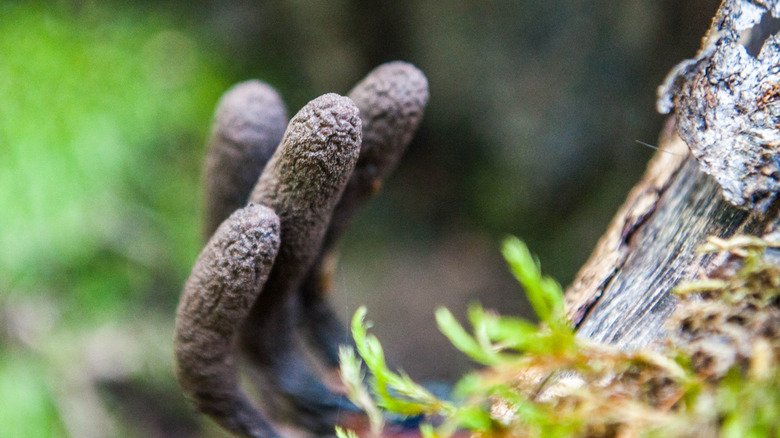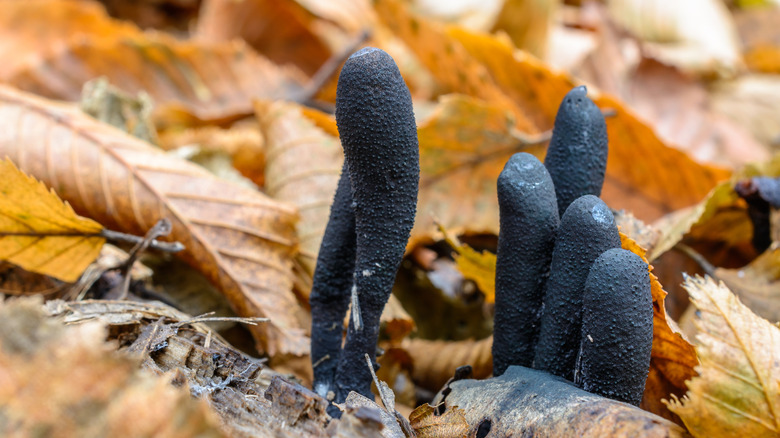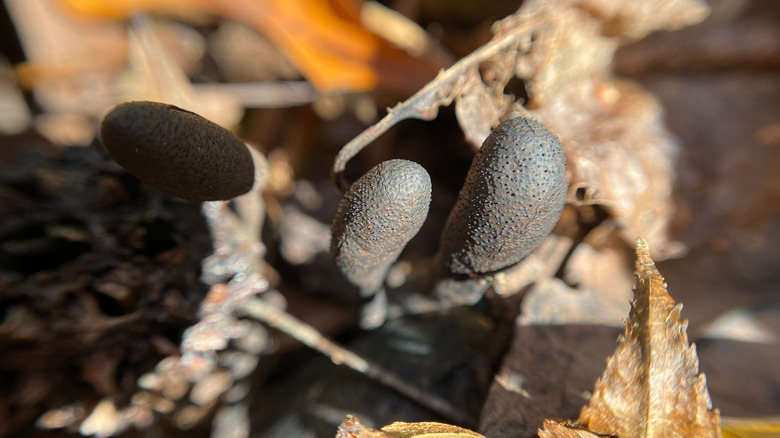The Fungus That Looks Like Dead Body Parts You'll Find In Nature
Nature is absolutely fascinating. It can be monumental and deeply inspiring. Though many of us cower indoors listening to the rain during an intense thunderstorm or the like, it's difficult not to be awestruck by the dazzling display unfolding. Terrifying, yes, but also somehow beautiful.
The same is true of a majestic sight like the Aurora Borealis. Per the National Weather Service, the so-called Northern Lights occur as a result of the Earth's ionosphere interacting with ions from the sun. The glorious glow is something that people travel from all over the planet to see, and though it can be heartbreakingly elusive and unpredictable to plan a vacation itinerary around, to witness it firsthand is to understand you're truly in the presence of something special.
It's often said that time in nature can be inspiring and healing, and can open our minds to the wonders of this planet. We often lose sight of such things over the course of our daily lives. Not all of it's so beautiful, however. There's one interesting-yet-grotesque fungus out there, for instance, that resembles decomposing body parts of humans far, far too much.
Why is the dead man's fingers fungus called that? You guessed it.
Needless to say, the word "fungus" isn't one that's typically very appetizing. For many of us, it evokes images of conditions we'd seek a pharmacist's advice for, or of rot lurking in a dark corner of homes. Or, of course, of mushrooms.
Those of us who don't have much more experience with mushrooms than the occasional farmhouse pizza might not realize it, but mushrooms are hugely varied. In fact, per Woodland Trust, the United Kingdom alone is home to more than 15,000 varieties of mushroom. Among them is the iconic Amanita muscaria, or fly agaric, which is instantly recognizable for its brightly colored cap with white spots. It's the quintessential beautiful-yet-gross-looking mushroom.
Those who have a fondness for the macabre and distinctly unpleasant, however, may want to look a little further beyond the likes of the fly agaric. Another mushroom, one Xylaria polymorpha, has surely been terrifying hikers and anyone else who stumbles upon it for generations. It's more commonly known as dead man's fingers, according to Woodland Trust, and it certainly earns the name with its gruesome likeness to such.
The fungus can serve as a warning for gardeners
The dead man's fingers fungus is so named because it extends from the soil looking like a prop from a bad zombie movie. According to the Woodland Trust, they are alarmingly "realistic" in size too, with each individual piece up to around eight centimeters (3.14 inches long). They're regular (and rather unpleasant) sights in the woodland of the United States and Europe.
Of course, if the dead man's fingers only looked ghastly, that could be forgiven. Mushrooms don't tend to be very aesthetically pleasing as a rule. The issue is, though, these creepy customers can also be a sign of something very dangerous for surrounding plants.
As the University of Wisconsin-Madison reports, some forms of Xylaria are related to black wood rot in trees. When it presents above the soil in its hideously finger-like way, the tree concerned has been infected for some time and there's little to do to prevent further damage. The outlet goes on to explain that the protruding dead man's fingers create spores which carry the fungus, and so the rot.
Gardening Know How reports that, hideous as they may be, these protuberances are actually only a sign of a potential issue. Saprotrophic fungi such as this have an important place in their ecosystems, helping to break down dying and dead wood. If found on or near a tree, however, that tree may already be doomed, but it can spread to other plants and so the remains should be removed.


